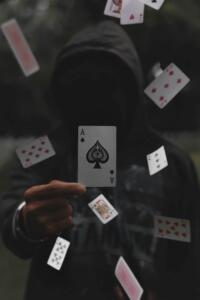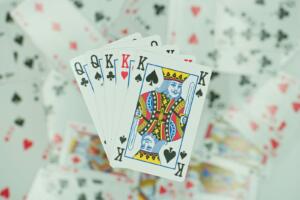Table of Contents
Baseball cards have long been a cornerstone of sports memorabilia. Originally included in gum packs in the early 20th century, they changed from children’s playthings into collectible items valued by enthusiasts worldwide. Nowadays, baseball cards reflect both the sport’s rich history and a complex collectibles market, where condition, rarity, and player significance directly impact value.
Introduction to Baseball Cards
Baseball cards are typically small rectangular pieces of cardboard featuring a player’s image on the front and personal or statistical information on the back, and provide a fun way to Learn more about baseball. Initially marketed towards children, they have become prized collectibles with both sentimental and financial significance. Some collectors focus on historical preservation, while others seek cards as investments or memorabilia.
Types of Baseball Cards
There are several types of baseball cards, each with distinct traits:
- Base Cards: Standard cards from a given set, often the most numerous.
- Inserts: Special cards inserted randomly into packs, featuring unique designs or themes.
- Parallels: Variations of base cards with differences in colour, foil, or numbering.
- Autographed Cards: Cards signed by players, often limited in production.
- Memorabilia Cards: Cards containing pieces of game-used jerseys, bats, or other equipment.
- Rookie Cards: The first official card of a player, typically highly sought after.
For example, autographed cards signed directly on the card (hard-signed) generally hold greater value than those with sticker signatures. Additionally, serial-numbered parallels limited to small print runs (like 1/10 or 1/25) tend to be more collectible due to scarcity.
Popular Baseball Card Brands
Several important companies have shaped the baseball card market. Topps is the main brand with MLB licences for many years, known for its popular sets and new card designs. Bowman, owned by Topps, focuses on rookie and prospect cards, often showing the first cards of new players. Panini doesn’t have MLB logos but makes cards for other baseball groups and is known for bright, modern designs. Upper Deck no longer makes MLB cards, but their older sets are still popular.
Topps has different product lines like Topps Chrome, Bowman Chrome, and Topps Heritage that suit different types of collectors. Some cards have shiny, modern looks, while others are made to look vintage. This gives collectors many choices depending on what style they like best.
Collecting Baseball Cards
Collectors adopt varied approaches depending on their goals. Some specialise in complete set building by year or brand, while others focus on specific players or teams. Many enjoy acquiring cards with autographs or memorabilia fragments for personal significance.
Online databases such as Trading Card Database help track collections and card values. “Breaks” are also popular – shared purchases where collectors buy spots in a sealed box, then receive random cards from the opened packs.
Set builders often aim to complete annual Topps Series 1 and Series 2 releases, whereas player collectors might seek every parallel and insert of a favourite athlete.
Investing in Baseball Cards
Baseball cards can be good investments if chosen carefully. Investors focus on rookie cards of notable players, low-numbered serial cards, and professionally graded ones. Condition matters a lot – small flaws can lower value. Grading population reports helps assess rarity. Player performance and career milestones also affect demand; established players’ rookie cards are usually more valuable than prospects’.
Baseball Card Grading and Authentication
Third-party grading checks baseball cards for centring, corners, surface, and edges. The main graders are PSA, Beckett (BGS), and SGC. Cards are scored from 1 to 10, with 9 or 10 (Gem Mint) being the most valuable. Autographed cards need signature verification. Grading can be costly, so it’s usually done only for higher-value cards.
Storage and Handling
Proper storage preserves condition and value. Recommendations include:
- Using soft penny sleeves and rigid top loaders for individual cards
- Storing cards in binders with acid-free pages or boxes with dividers
- Keeping cards away from direct sunlight, humidity, and fluctuating temperatures
- Employing silica gel packs to control moisture
High-value cards should be slabbed (sealed in plastic cases) after grading. Avoid handling cards by the face to prevent oils and dirt from damaging surfaces.
Vintage and Modern Baseball Cards
Vintage baseball cards typically refer to those printed before 1980. They are prized for scarcity and historical context, but are often more susceptible to wear due to age and less protective storage in the past. Iconic vintage cards include the 1952 Topps Mickey Mantle.
Modern cards, printed from the 1980s onward, feature better printing technology, thicker stock, and more limited runs, such as serial-numbered parallels and inserts. However, the mass production of modern cards, especially during the late 80s and 90s, has created large surpluses, affecting their overall market values.
Baseball Card Market Trends
During the COVID-19 pandemic, baseball card values increased significantly. Since then, vintage card demand has remained stable, while modern card values vary. Fractional ownership platforms and digital cards (NFTs) have emerged, but physical cards remain central to collecting.
Auctions
Auction houses specialising in sports memorabilia, such as Goldin Auctions, Heritage Auctions, and PWCC Marketplace, facilitate sales of high-end baseball cards. Auctions are commonly used for cards valued in the six- and seven-figure ranges.
Auctions provide provenance, detailed grading information, and transparent bidding, often drawing serious collectors and investors worldwide.
Investing Strategies
Key investing strategies for baseball cards include prioritising rookie cards of players with proven career longevity and significant milestones over uncertain prospects. Investors focus on cards with low population counts and high professional grades. They use market data and population reports to avoid overpaying during hype spikes.
Diversifying between vintage and modern cards also helps balance risk and market volatility. Patience and thorough research are essential because the market can fluctuate due to factors like player injuries, trades, or changes in public interest.
Collecting Communities
Collectors are often active in online forums such as Reddit’s r/baseballcards and Blowout Forums to trade, share knowledge, and stay informed. New Zealand and Australian collectors also use Facebook groups and local trading meet-ups.
Apps like Card Ladder and Market Movers help track card values and trends. Participation in communities provides access to trusted trading partners and market insights that are difficult to find independently.
Baseball Card Shows and Events
In-person card shows and conventions provide opportunities to inspect cards firsthand and network with other collectors. While the largest events take place mainly in North America, New Zealand occasionally hosts smaller sports memorabilia shows.
FAQs
What baseball cards are actually worth money?
Cards that feature star players, especially rookie cards, and those professionally graded with high scores usually hold value. Scarcity, condition, and player significance influence prices most.
Why are cards from the ’80s and ’90s worthless?
During this period, manufacturers overproduced cards, causing a surplus. This abundance, combined with less focus on condition and mass distribution, led to widespread devaluation, often called the “junk wax era.”
How do I know which baseball cards are valuable?
Check recent sale prices on marketplaces like eBay. Refer to the grading population reports to understand scarcity. Key factors include player, card year and set, condition, and whether it has been graded and authenticated.
What baseball card is worth $1 million?
The 1952 Topps Mickey Mantle card is the most famous example, with some high-grade versions selling for over NZD 18 million in recent years. The T206 Honus Wagner card is another historically significant card that has exceeded NZD 1 million at auction due to extreme rarity.




